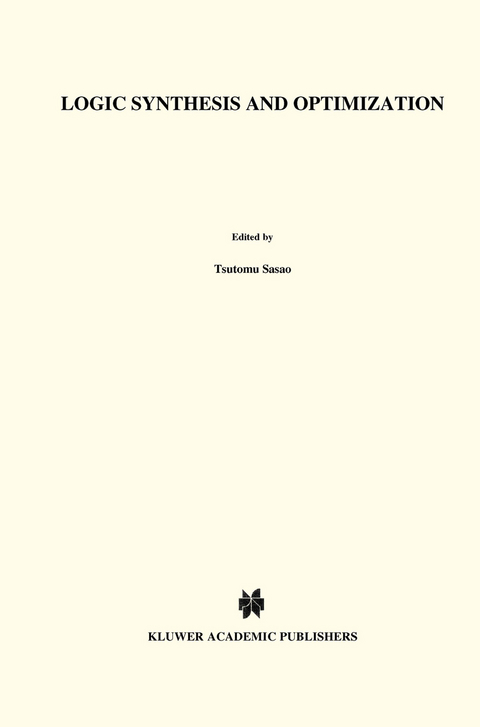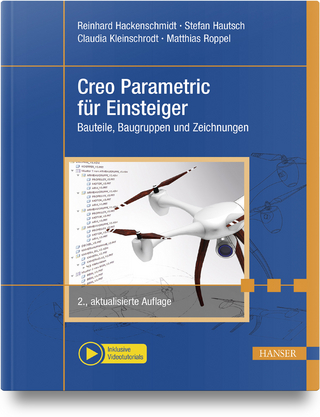
Logic Synthesis and Optimization
Kluwer Academic Publishers (Verlag)
9780792393085 (ISBN)
1 A New Exact Minimizer For Two-Level Logic Synthesis.- 1.1 Introduction.- 1.2 Notation.- 1.3 The Minimum Canonical Cover.- 1.4 Obtaining the Minimum Canonical Cover.- 1.5 Generating the Minimum Cover From the Minimum Canonical Cover.- 1.6 Heuristic Minimization Procedures.- 1.7 Experimental Results.- 1.8 Related Work.- 2 A New Graph Based Prime Computation Technique.- 2.1 Introduction.- 2.2 Definitions and Notations.- 2.3 The IPS Representation.- 2.4 Prime Computation of Boolean Functions.- 2.5 Prime Computation of Boolean Vectorial Functions.- 2.6 Experimental Results.- 2.7 Conclusion.- 3 Logic Synthesizers, The Transduction Method And Its Extension, Sylon.- 3.1 Introduction.- 3.2 Transduction Method.- 3.3 Logic Design of MOS Networks.- 3.4 New Logic Synthesis System, SYLON.- 3.5 Conclusions.- 4 Network Optimization Using Don’t-Cares And Boolean Relations.- 4.1 Introduction.- 4.2 Multi-Level Combinational Networks.- 4.3 Permissible Functions, Don’t-Cares, and Boolean Relations.- 4.4 Minimization Using Don’t-Cares.- 4.5 Minimization Using Boolean Relations.- 4.6 Conclusion.- 5 Multi-Level Logic Minimization Of Large Combinational Circuits By Partitioning.- 5.1 Introduction.- 5.2 Boolean minimization.- 5.3 Partitioning for Boolean minimizers.- 5.4 Top-down application of two-way partitioning.- 5.5 Experimental results.- 5.6 Conclusions.- 6 A Partitioning Method For Area Optimization By Tree Analysis.- 6.1 Introduction.- 6.2 Logic Partition and Partial Collapsing.- 6.3 Partial Collapsing Based on Tree Structure Analysis.- 6.4 Logic Optimization.- 6.5 Algorithms.- 6.6 Experimental Results.- 6.7 Conclusions.- 7 A New Algorithm For 0-1 Programming Based On Binary Decision Diagrams.- 7.1 Introduction.- 7.2 Preliminaries.- 7.3 The Algorithm.- 7.4 Experimental Results.-7.5 Conclusions and Future Work.- 8 Delay Models And Exact Timing Analysis.- 8.1 Introduction.- 8.2 Ternary Delay Simulation and a Waveform Calculus.- 8.3 Delay Models.- 8.4 Combinational Timing Verification Under the XBDO Model.- 8.5 Combinational Timing Verification Under the XBD Model.- 8.6 Conclusions.- 9 Challenges To Dependable Asynchronous Processor Design.- 9.1 Introduction.- 9.2 System Timing Failures.- 9.3 Delay Models.- 9.4 Asynchronous Architecture.- 9.5 Asynchronous Control and Data Transfer.- 9.6 Logic Synthesis.- 9.7 Testing and Concurrent Checking.- 9.8 Metastability.- 9.9 Conclusions.- 10 Efficient Spectral Techniques for Logic Synthesis.- 10.1 Introduction.- 10.2 Transformation and Complexity of Boolean Functions.- 10.3 Efficient Spectral Methods for Logic Synthesis.- 10.4 Conclusion.- 11 Fpga Design by Generalized Functional Decomposition.- 11.1 Introduction.- 11.2 Generalized Functional Decomposition.- 11.3 Generalized Functional Decomposition using BDD.- 11.4 Design Method for LUT Networks.- 11.5 Experimental Results.- 11.6 Conclusions and Comments.- 12 Logic Synthesis With Exor Gates.- 12.1 Introduction.- 12.2 Design Method of AND-EXOR circuits.- 12.3 Simplification of AND-EXOR expressions.- 12.4 Design Method for AND-OR-EXOR circuits.- 12.5 Experimental Results.- 12.6 Conclusions and Comments.- 13 And-Exor Expressions and their Optimization.- 13.1 Introduction.- 13.2 Several Classes of AND-EXOR Expressions.- 13.3 Comparison of Complexity.- 13.4 Minimization of PSDKROs.- 13.5 Experimental Results.- 13.6 Conclusion.- 14 A Generation Method for Exor-Sum-of-Products Expressions Using Shared Binary Decision Diagrams.- 14.1 Introduction.- 14.2 Preliminaries.- 14.3 Algorithm.- 14.4 Experimental Results.- 14.5 Conclusion.- 15 A New Technology Mapping Method Based on Concurrent Factorization And Mapping.- 15.1 Introduction.- 15.2 Concurrent Factorization and Mapping.- 15.3 Process of Technology Mapping.- 15.4 Experimental Results.- 15.5 Conclusions and Future work.- 16 Gate Sizing For Cell-Based Designs.- 16.1 Introduction.- 16.2 Previous Works.- 16.3 The Theda.CBS System.- 16.4 Experimental Results.- 16.5 Summary and Future Works.- A About the Authors.
| Erscheint lt. Verlag | 31.1.1993 |
|---|---|
| Reihe/Serie | The Springer International Series in Engineering and Computer Science ; 212 |
| Zusatzinfo | XV, 375 p. |
| Sprache | englisch |
| Maße | 155 x 235 mm |
| Themenwelt | Informatik ► Weitere Themen ► CAD-Programme |
| Technik ► Elektrotechnik / Energietechnik | |
| ISBN-13 | 9780792393085 / 9780792393085 |
| Zustand | Neuware |
| Informationen gemäß Produktsicherheitsverordnung (GPSR) | |
| Haben Sie eine Frage zum Produkt? |
aus dem Bereich


